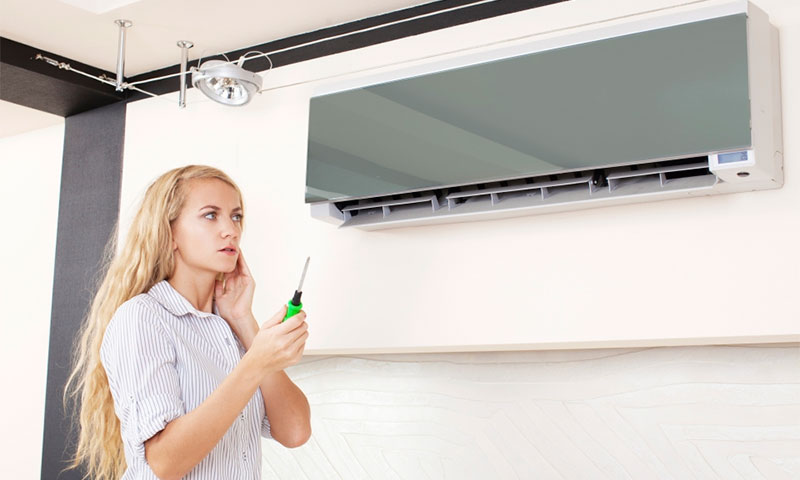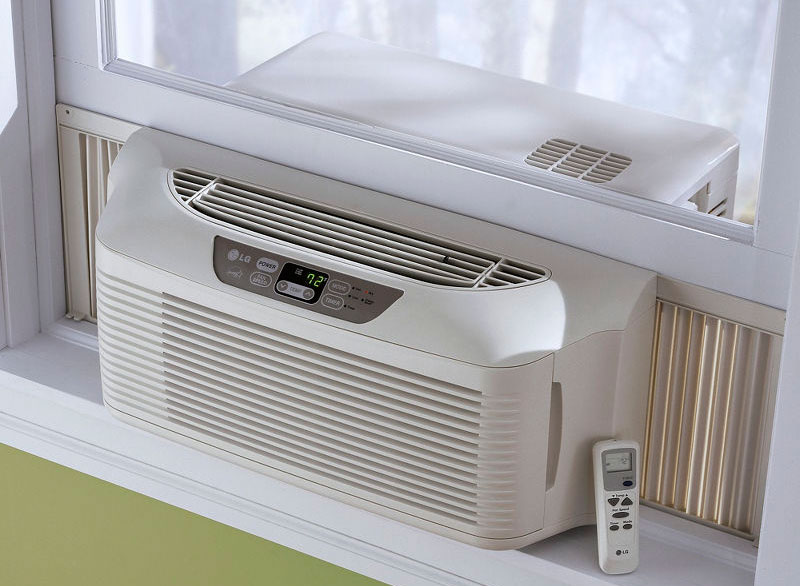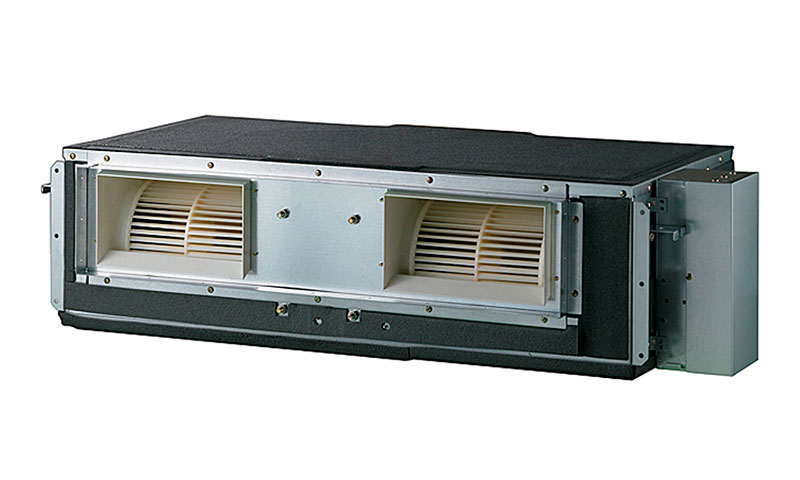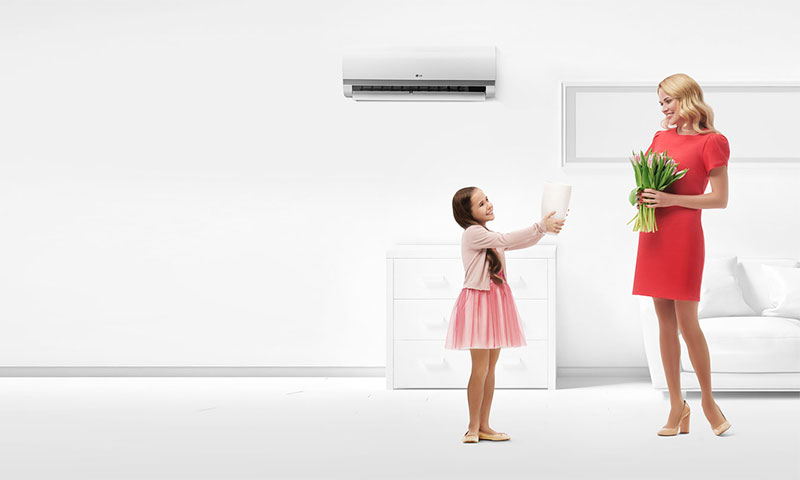It is not clear how we used to survive in the hot summer without air conditioning. Well, now they are in all stores. Stop basking in the warm jets of the fan - it's time to get serious about creating weather in the house. Our article will help you choose the ideal air conditioner for the apartment and the garden, and at the same time it will tell you about the advantages and disadvantages of the existing climate systems.

Content:
The best air conditioner manufacturers - which company to choose
Technique of a well-established manufacturer - this is half the success with the purchase of air conditioning. The competition in this market is quite tough, so each company will try to make their products as convenient and reliable as possible.
To the best manufacturers of air conditioners include the following companies:
- Daikin
- Fujitsu general
- Mitsubishi electric
- LG
- Electrolux
In our ranking best conditioners You can read more about the flagship models of these brands. However, when choosing an air conditioner, not only a beautiful design and high-quality assembly, but also the conformity of its technical parameters to the upcoming working conditions is important.
Before buying, we recommend that you study all the features of modern climate technology and listen to the advice of experts to make the right choice.
The principle of operation and the device air conditioner

An air conditioner is a sophisticated electromechanical device capable of rapidly cooling air in a room. His work is based on the laws of physics about the absorption of heat by a liquid (in our case, a coolant).
Such a unit consists of two important blocks:
Evaporator
Always facing the inside of the room and is responsible for the selection of heat from the air.
In a stylish box behind the panel with a movable grille, the main operating units of the air conditioner are hidden:
- Actually evaporator;
- Filters that trap dust and odors;
- Internal fans for supplying cooled air to the house;
- The electronic board is the heart of the air conditioner responsible for its operation;
- Thermostat;
- Control panel (may be absent);
- Condensate collector with by-pass tube.
All this is closed by a panel with movable louvre slats, which set the direction of the cooled exhaust air.
Capacitor
The outdoor unit, in which the reverse process occurs - the transfer of heat from the premises to the environment.
Inside the condenser are the following elements:
- Compressor, driving freon on internal tracks and responsible for its compression;
- The radiator, which moves the cooling refrigerant;
- Fan for efficient heat dissipation;
- Cooling system filter;
The movement of the liquid refrigerant begins in the path of the outdoor unit. The compressor installed here overtakes it in the heat exchanger of the evaporator located in the room where the freon boils and turns into a gaseous state. This process is accompanied by a decrease in temperature in the tubes, and the air cooled by them is blown into the room by air conditioning.
The “evaporated” and charged with the energy of the selected heat the refrigerant continues its movement towards the outdoor unit, where the compressor compresses it and returns it to the liquid state again.
There is a reverse process, followed by heating of the carrier to +70 .. + 90 ° C. Here, a powerful fan is taken to work, which drives the accumulated heat out, and the freon continues to circulate in the same way.
Types of air conditioners
Windowed

The earliest and simplest in design monoblocks installed in the window frame.Here, both the evaporator and the condenser are located in the same housing, only the first is facing the room, and the second is facing the street. With these models in the United States in the 30s began the history of air conditioners, but today many consider these devices obsolete. However, modern window systems prove the opposite.
Pros:
- Low cost;
- Simplicity of design;
- Easy installation (if the configuration of the window frame allows the installation of air conditioning);
- Long service life;
- Availability of ventilation.
Minuses:
- Noisy;
- Cumbersome;
- They require reliable sealing so that the heat is not lost in winter.
Wall mounted

The most common and functional type of climate technology. In such models, the internal and external blocks are separated: the first is installed directly in the room, the second through the wall on the facade of the building. It also displays a tube that drains condensate.
Pros:
- Functionality, the presence of several modes of operation;
- Saving free space;
- Maximum air cooling rate;
- Silent operation due to the compressor and fan;
- Convenient use;
- Huge selection of models.
Minuses:
- High price;
- Requires professional installation.
Outdoor

Such conditioners can be stationary or portable, although their weight is rather big. Mobile models, as well as window, are a monoblock, inside which are all the work items.
To remove the heated air, a flexible hose is used here, which is brought out through a window with special seals. Floor-standing stationary is no different from wall-mounted double-block systems - except that they are not mounted under the ceiling.
Pros:
- Acceptable cost;
- Simple design;
- Possibility of self-assembly;
- Mobility of portable models;
- Good functionality.
Minuses:
- Big sizes;
- Cold air pulls on the legs.
Duct

Such air conditioners are installed in the ventilation channels. They are almost invisible, but due to the location of their installation and maintenance are seriously complicated. Such models have a separate evaporator and condenser, only the internal unit is hidden in the ventilation shaft.
Pros:
- Imperceptible in the interior;
- Work silently;
- Saving free space;
- High performance.
Minuses:
- Labor-intensive installation and maintenance;
- Very high cost;
- Not suitable for home use.
Cassette

Something between a wall and ducted two-piece air conditioners. With the only difference that the evaporator is installed under the ceiling (most often suspended) and looks like ordinary ventilation.
Pros:
- High power;
- Quiet operation;
- Invisibility;
- No feeling of cluttered space.
Minuses:
- In rooms with high ceilings, the flow of cold air may not reach the floor;
- Extreme cost;
- Time consuming installation.
Split system

The most complex and modern models of air conditioners, where several internal are simultaneously connected to a common external unit. These are mainly wall mounted appliances located in adjacent rooms, however, the installation method of the evaporators can actually be anything.
Pros:
- High power;
- Multifunctionality;
- The ability to cool several rooms at the same time;
- Separate adjustment of evaporators.
Minuses:
- Exorbitant price;
- Difficult installation and switching of all blocks.
Air conditioning selection options

Air conditioning is not cheap, and after installation it will be difficult to dismantle and replace an unsuitable model. Therefore, when choosing, you need to immediately take into account all the nuances - you have no right to make mistakes.
Installation location
There will be no strict recommendations on this item, since the choice of a specific model depends on the layout of the room and the placement possibilities of this or that climate technology.
It is clear that if you do not have a hypermarket with a powerful ventilation system, the channel air conditioner will simply not be installed.But other household and close to them models will tell you which installation method is right for you:
1. If you are going to order new windows and want to save on the air conditioner, take a cheap window unit and ask the measurers to shortcut the frame considering its installation in the opening.
2. If you want to take the air conditioner with you to the dacha or just move it from room to room - look for a mobile floor option.
3. Planning to make repairs in the apartment? It's time to put a two-block wall-mounted or floor-mounted air conditioner - then carefully close the hole in the wall.
4. If the project you have provided suspended ceilings, behind them you can hide the cassette unit.
5. For a country house or multi-room apartment of a large area, it is better to install a split system with wiring to all residential premises.
Power
You should not choose it according to the principle “the more the better”. Of course, the work of a powerful air conditioner is easier to adjust to fit your needs, which is almost impossible in the case of a weak device. However, it is financially not profitable to make an excess stock - your air conditioner will simply not work out the money spent on it.
Calculate the required power of climate technology, taking into account the main factors:
1. The area of the room - for every 10 m2 with a standard ceiling height of 2.5-2.7 m, 1000 watts of electricity are needed.
2. Orientation on the cardinal points - if the windows face East or South, add 20% to the calculated power.
3. The number of people living in the room - in excess of each need another 100 watts.
Noise performance
The operating volume of the air conditioner is an important parameter, especially if it is installed in the bedroom. It in turn depends on the power and design of the unit (monoblocks are more noisy). Unfortunately, there are no quiet models, but you can always buy a two-block version with maximum sound insulation.
The average noise output of air conditioners varies between 24–35 dB, but most modern models already have a “night mode”, in which the sound level drops to a comfortable 17 dB.
Additional functions
Good expensive air conditioners can not only cool the apartment in the summer, but also heat it in the autumn or even in the winter.
Modern climate technology can have the following additional features:
1. Inversion - reducing the noise of work (and at the same time the consumption of electricity) due to the smooth change in compressor power. Increases the cost of the device, but increases its energy efficiency.
2. Sleep Mode - a slow decrease in the temperature in the room with the subsequent transition of the fan to the quietest mode.
3. Turbo - short-term start at maximum power (up to 20% of nominal) for the quickest cooling of rooms.
4. I Feel - setting the thermostat to measure the temperature in the console area, that is, next to the host.
5. The defrosting of the outdoor unit and the “hot start” are actual functions for air conditioners with heating mode.
6. Draining or moistening the air in the room.
Which air conditioner to choose

1. If you are looking for a cheap air conditioner and do not want to spend money on its installation, choose a window or floor model. But remember: in terms of functionality, they are not the best, and their power indicators are low. This is an option for small rooms that are not designed for sleeping.
2. Those who are generally annoyed by the sound of climate technology, should prefer wall models or full split-systems with the obligatory function of night mode or inversion. Such air conditioners are suitable for owners of large apartments or country houses.
3. For avid gardeners visiting the hacienda only in summer, a floor-mounted mobile air conditioner with an average noise output will suit. It is desirable that he had the functions of I Feel and "turbo" - thanks to them, you can cool down faster by returning to the house from the street.
4. Want to hide the air conditioner so that it does not spoil the impression of the original interior? Take a cassette model (leave the channel for large shopping centers and production shops). Just look for a device with the maximum number of newfangled features.
The cost of air conditioners

The price of the air conditioner directly depends on its power and a set of functions, so that it is quite possible to navigate it when choosing. The more expensive climate equipment, the more efficient and comfortable it will work for you. However, you should not discount the mark-up for the big name of the models of famous brands.
1. Simple window air conditioners will cost 9000–37000 rubles.
2. Home floor unit can be purchased at a price of 10 to 50 thousand, the price of industrial models for large areas comes to 600 thousand rubles.
3. Wall-mounted air conditioners that work only for cooling cost 8-30 thousand rubles, with heating mode from 15 to 200.
4. For cassette will have to pay a serious amount in the range of 20-200 thousand rubles. Additional heating mode will increase the cost of the device by another 2-2.5 times.
5. Channel conditioners are the most expensive: 30–870 thousand, but only owners of large objects acquire them.
It will be interesting to friends too







